-
 Bitcoin
Bitcoin $105,926.8318
1.41% -
 Ethereum
Ethereum $2,524.5994
1.22% -
 Tether USDt
Tether USDt $1.0004
-0.01% -
 XRP
XRP $2.1804
-0.04% -
 BNB
BNB $652.5410
1.01% -
 Solana
Solana $150.9832
0.96% -
 USDC
USDC $1.0000
0.02% -
 Dogecoin
Dogecoin $0.1838
2.19% -
 TRON
TRON $0.2855
3.12% -
 Cardano
Cardano $0.6655
0.31% -
 Hyperliquid
Hyperliquid $34.5498
2.00% -
 Sui
Sui $3.2482
1.65% -
 Chainlink
Chainlink $13.8425
2.22% -
 Avalanche
Avalanche $20.8422
6.79% -
 UNUS SED LEO
UNUS SED LEO $9.1205
2.03% -
 Stellar
Stellar $0.2653
0.42% -
 Bitcoin Cash
Bitcoin Cash $407.7091
2.76% -
 Toncoin
Toncoin $3.1833
1.30% -
 Shiba Inu
Shiba Inu $0.0...01273
1.92% -
 Hedera
Hedera $0.1694
2.47% -
 Litecoin
Litecoin $88.3638
1.17% -
 Polkadot
Polkadot $4.0271
3.09% -
 Monero
Monero $326.6392
0.30% -
 Ethena USDe
Ethena USDe $1.0012
-0.01% -
 Bitget Token
Bitget Token $4.6644
1.78% -
 Dai
Dai $1.0000
0.02% -
 Pepe
Pepe $0.0...01150
3.58% -
 Pi
Pi $0.6395
3.05% -
 Uniswap
Uniswap $6.3674
5.30% -
 Aave
Aave $260.2577
3.58%
How to read the downward ADX in the DMI indicator? How to identify the trend weakening signal?
Downward ADX signals weakening trends; monitor ADX with +DI/-DI lines and price action for confirmation, adjusting trades accordingly.
May 28, 2025 at 10:28 pm
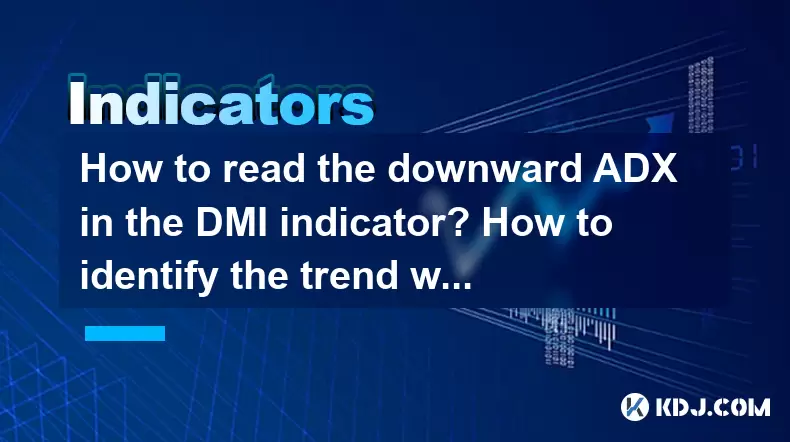
The Directional Movement Index (DMI) is a popular technical analysis tool used by cryptocurrency traders to determine the strength of a trend and potential price movements. One of the key components of the DMI is the Average Directional Index (ADX), which helps traders gauge the strength of a trend, whether it's upward or downward. In this article, we will focus specifically on interpreting the downward ADX within the DMI indicator and identifying signals that suggest a weakening trend.
Understanding the DMI Indicator
The DMI indicator consists of three lines: the Positive Directional Indicator (+DI), the Negative Directional Indicator (-DI), and the Average Directional Index (ADX). The +DI measures upward movement, the -DI measures downward movement, and the ADX measures the strength of the trend regardless of its direction.
The ADX is calculated based on the difference between +DI and -DI, smoothed over time. A higher ADX value indicates a stronger trend, while a lower value suggests a weaker trend. When the ADX is falling, it indicates that the current trend is losing strength.
Interpreting the Downward ADX
When the ADX line is trending downward, it signals that the strength of the current trend, whether bullish or bearish, is diminishing. This is crucial information for traders because it can indicate potential reversals or periods of consolidation.
A downward ADX does not indicate the direction of the trend; it only shows that the trend's strength is decreasing. For instance, if the ADX is declining while the price is in an uptrend, it suggests that the bullish trend is weakening. Similarly, if the ADX is falling during a downtrend, it indicates that the bearish trend is losing momentum.
Identifying the Trend Weakening Signal
To identify a trend weakening signal using the downward ADX, traders need to pay close attention to the ADX line and its interaction with the +DI and -DI lines. Here are the key steps to follow:
- Monitor the ADX line for a consistent downward movement. A downward trend in the ADX line over several periods is a clear sign that the current trend is weakening.
- Compare the ADX line with the +DI and -DI lines. If the ADX line is falling while the +DI and -DI lines are converging or crossing each other, it reinforces the signal that the trend is losing strength.
- Observe the price action. A downward ADX combined with price action that shows smaller price swings or consolidation patterns can confirm that the trend is indeed weakening.
Practical Example of Downward ADX
Let's consider a practical example to illustrate how to read a downward ADX and identify a trend weakening signal in the context of a cryptocurrency chart.
- Suppose you are analyzing the price chart of Bitcoin (BTC). You notice that the price has been in an uptrend for the past few weeks, with the +DI line above the -DI line, indicating a bullish trend.
- However, you observe that the ADX line, which was previously above 25, has started to decline and is now below 20. This suggests that the bullish trend is losing strength.
- You also notice that the +DI and -DI lines are starting to converge. This further confirms that the trend is weakening.
- Finally, you see that the price action is showing smaller price swings and the formation of a consolidation pattern. This aligns with the downward ADX and reinforces the signal of a weakening trend.
Using the Downward ADX in Trading Decisions
Understanding the downward ADX and identifying trend weakening signals can significantly impact trading decisions. Here's how traders can use this information:
- Adjust stop-loss orders. When the ADX is declining, it may be wise to tighten stop-loss orders to protect profits or minimize losses, as the trend could reverse or enter a consolidation phase.
- Consider taking profits. If you are in a profitable position and the ADX is falling, it might be a good time to take some profits off the table, especially if other indicators also suggest a weakening trend.
- Prepare for potential reversals. A declining ADX can be an early warning sign of a trend reversal. Traders can prepare by monitoring other indicators and price action for confirmation of a reversal.
Combining Downward ADX with Other Indicators
While the downward ADX is a valuable tool for identifying trend weakening signals, it is most effective when used in conjunction with other technical indicators. Here are some additional indicators that can complement the ADX:
- Moving Averages. Using moving averages can help confirm the direction of the trend and potential reversals. For example, if the ADX is falling and the price crosses below a key moving average, it can reinforce the signal of a weakening trend.
- Relative Strength Index (RSI). The RSI can indicate overbought or oversold conditions. A declining ADX combined with an RSI moving out of overbought or oversold territory can provide additional confirmation of a weakening trend.
- Volume Indicators. Volume can provide insights into the strength of price movements. If the ADX is falling and volume is also declining, it can suggest that the trend is indeed losing momentum.
Practical Application in a Trading Scenario
To illustrate how to apply the downward ADX in a real trading scenario, let's consider a situation where you are trading Ethereum (ETH).
- You are currently in a long position on ETH, and the price has been in an uptrend for the past month. The +DI line is above the -DI line, and the ADX line is above 25, indicating a strong bullish trend.
- Over the next few days, you notice that the ADX line starts to decline and falls below 20. This suggests that the bullish trend is weakening.
- You also observe that the +DI and -DI lines are starting to converge, and the price action shows smaller price swings. These additional signals reinforce the indication that the trend is losing strength.
- Based on this information, you decide to tighten your stop-loss order to protect your profits. You also consider taking some profits off the table, as the weakening trend could lead to a reversal or consolidation.
Frequently Asked Questions
Q: Can the ADX be used to predict the direction of the trend?
A: No, the ADX only measures the strength of the trend, not its direction. To determine the direction, traders should look at the +DI and -DI lines within the DMI indicator. The ADX helps traders understand whether the trend, regardless of its direction, is strong or weak.
Q: What is considered a significant level for the ADX to indicate a strong trend?
A: Generally, an ADX value above 25 is considered to indicate a strong trend. Values above 50 are seen as extremely strong trends. However, these thresholds can vary based on the specific market and timeframe being analyzed.
Q: How often should the ADX be monitored to identify a weakening trend?
A: The frequency of monitoring the ADX depends on the trading timeframe. For day traders, checking the ADX every few hours can be beneficial. Swing traders might monitor it daily or weekly. It's important to consistently review the ADX to catch any significant changes in trend strength.
Q: Is it possible for the ADX to give false signals of a weakening trend?
A: Yes, like any technical indicator, the ADX can give false signals. It's crucial to use the ADX in conjunction with other indicators and price action to confirm any signals of a weakening trend. False signals can occur due to market noise or short-term fluctuations that do not reflect the overall trend.
Disclaimer:info@kdj.com
The information provided is not trading advice. kdj.com does not assume any responsibility for any investments made based on the information provided in this article. Cryptocurrencies are highly volatile and it is highly recommended that you invest with caution after thorough research!
If you believe that the content used on this website infringes your copyright, please contact us immediately (info@kdj.com) and we will delete it promptly.
- How to Invest in Gold Online and Digitally
- 2025-06-08 04:35:12
- YZi Labs (Formerly Binance Labs) Unveils 5 Pre-TGE Projects That Have a Chance to Be Listed on Binance
- 2025-06-08 04:35:12
- Dogecoin (DOGE) is at $0.17, Set to Bounce Back with a Falling Wedge Pattern
- 2025-06-08 04:30:12
- Riot Platforms Sells $38.8M Worth of Bitcoin (BTC) to Weather the Post-Halving Storm
- 2025-06-08 04:30:12
- Pi Network (PI) Has Caught the Attention of Many with Its Rapid Growth, but Is Now Facing Major Challenges in Its Price Movement
- 2025-06-08 04:25:13
- Worldcoin (WLD) Faces Legal Challenges in Kenya and Indonesia, Resulting in Token Price Drop
- 2025-06-08 04:25:13
Related knowledge
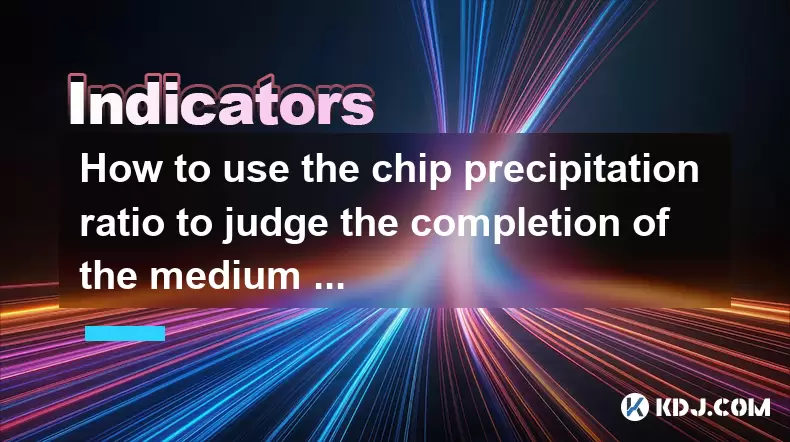
How to use the chip precipitation ratio to judge the completion of the medium and long-term bottom construction?
Jun 04,2025 at 03:36am
The chip precipitation ratio is a crucial metric used by investors to assess the accumulation of chips (or shares) at different price levels over time. This ratio helps in understanding the distribution of chips and can be a powerful tool for determining the completion of medium and long-term bottom construction in the cryptocurrency market. By analyzin...
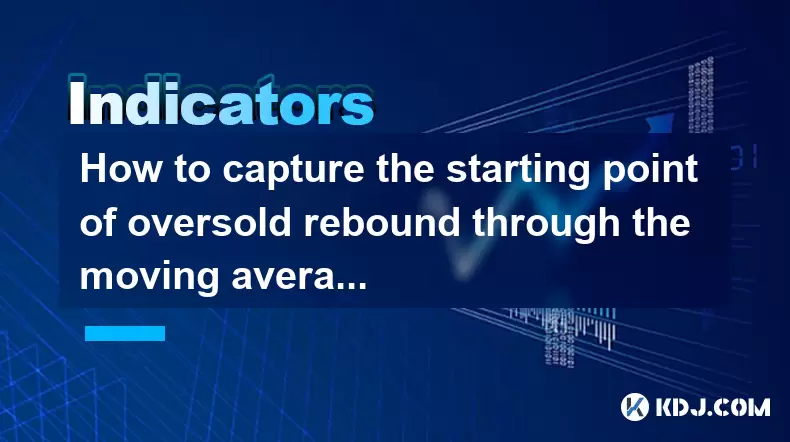
How to capture the starting point of oversold rebound through the moving average gravity reversal strategy?
Jun 04,2025 at 01:01pm
The moving average gravity reversal strategy is a sophisticated approach used by traders to identify potential entry points for buying cryptocurrencies when they are considered oversold. This strategy leverages the concept of moving averages to pinpoint moments when a cryptocurrency might be poised for a rebound. In this article, we will delve into the ...
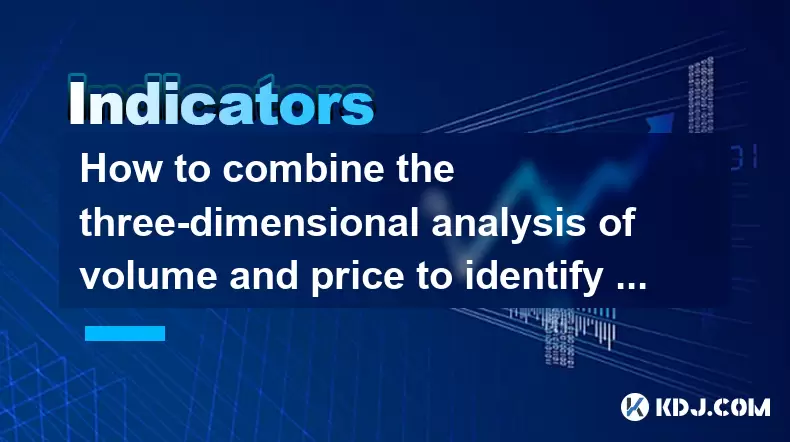
How to combine the three-dimensional analysis of volume and price to identify the golden buying point of breakthrough and retracement?
Jun 03,2025 at 11:42pm
In the dynamic world of cryptocurrencies, identifying the optimal buying points is crucial for maximizing profits and minimizing risks. One effective method to achieve this is by combining three-dimensional analysis of volume and price to pinpoint the golden buying points during breakouts and retracements. This article will delve into how to use this ap...
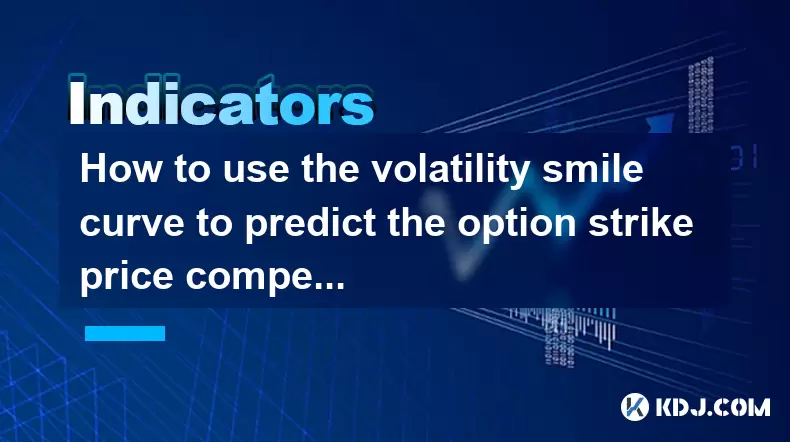
How to use the volatility smile curve to predict the option strike price competition area?
Jun 06,2025 at 01:01pm
The volatility smile curve is a graphical representation that shows the implied volatility of options across different strike prices for a given expiration date. It is called a 'smile' because the curve often takes the shape of a smile, with higher implied volatilities for options that are deep in-the-money or deep out-of-the-money, and lower implied vo...
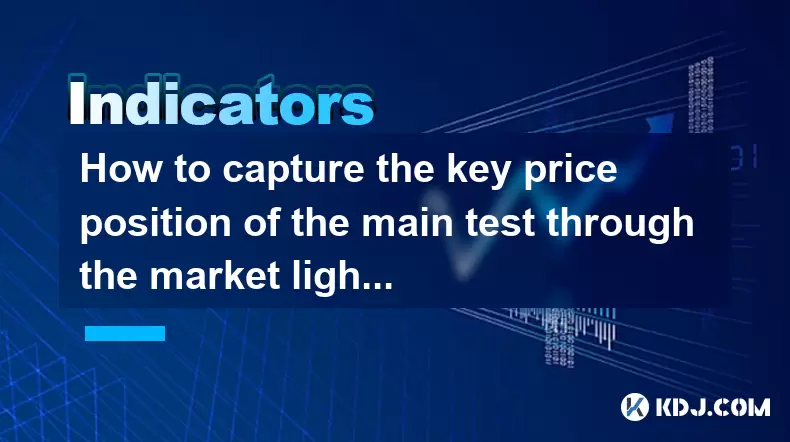
How to capture the key price position of the main test through the market lightning chart?
Jun 02,2025 at 06:07pm
Introduction to Market Lightning ChartThe market lightning chart is a powerful tool used by cryptocurrency traders to visualize price movements and identify key price positions. This chart type provides a detailed view of market activity, allowing traders to spot trends, reversals, and other significant price levels quickly. By understanding how to use ...
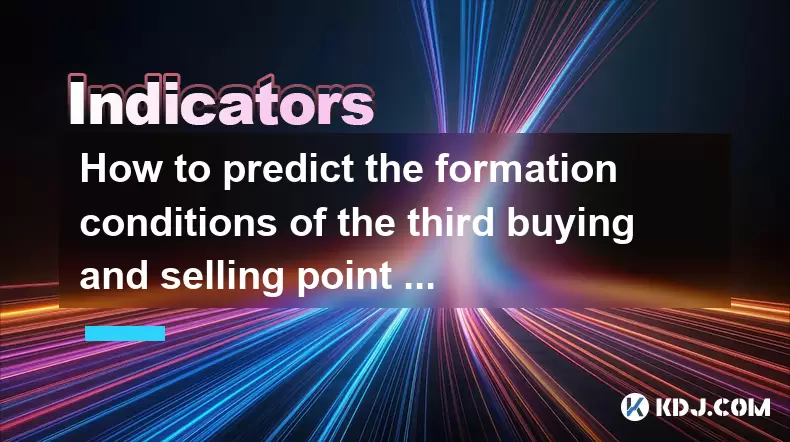
How to predict the formation conditions of the third buying and selling point in combination with the extension of the central axis of the Chaos Theory?
Jun 08,2025 at 12:42am
The concept of predicting the formation conditions of the third buying and selling point in the cryptocurrency market by combining the extension of the central axis of the Chaos Theory is an advanced analytical technique. This method involves understanding the chaotic nature of price movements and using it to identify key moments for trading. In this ar...

How to use the chip precipitation ratio to judge the completion of the medium and long-term bottom construction?
Jun 04,2025 at 03:36am
The chip precipitation ratio is a crucial metric used by investors to assess the accumulation of chips (or shares) at different price levels over time. This ratio helps in understanding the distribution of chips and can be a powerful tool for determining the completion of medium and long-term bottom construction in the cryptocurrency market. By analyzin...

How to capture the starting point of oversold rebound through the moving average gravity reversal strategy?
Jun 04,2025 at 01:01pm
The moving average gravity reversal strategy is a sophisticated approach used by traders to identify potential entry points for buying cryptocurrencies when they are considered oversold. This strategy leverages the concept of moving averages to pinpoint moments when a cryptocurrency might be poised for a rebound. In this article, we will delve into the ...

How to combine the three-dimensional analysis of volume and price to identify the golden buying point of breakthrough and retracement?
Jun 03,2025 at 11:42pm
In the dynamic world of cryptocurrencies, identifying the optimal buying points is crucial for maximizing profits and minimizing risks. One effective method to achieve this is by combining three-dimensional analysis of volume and price to pinpoint the golden buying points during breakouts and retracements. This article will delve into how to use this ap...

How to use the volatility smile curve to predict the option strike price competition area?
Jun 06,2025 at 01:01pm
The volatility smile curve is a graphical representation that shows the implied volatility of options across different strike prices for a given expiration date. It is called a 'smile' because the curve often takes the shape of a smile, with higher implied volatilities for options that are deep in-the-money or deep out-of-the-money, and lower implied vo...

How to capture the key price position of the main test through the market lightning chart?
Jun 02,2025 at 06:07pm
Introduction to Market Lightning ChartThe market lightning chart is a powerful tool used by cryptocurrency traders to visualize price movements and identify key price positions. This chart type provides a detailed view of market activity, allowing traders to spot trends, reversals, and other significant price levels quickly. By understanding how to use ...

How to predict the formation conditions of the third buying and selling point in combination with the extension of the central axis of the Chaos Theory?
Jun 08,2025 at 12:42am
The concept of predicting the formation conditions of the third buying and selling point in the cryptocurrency market by combining the extension of the central axis of the Chaos Theory is an advanced analytical technique. This method involves understanding the chaotic nature of price movements and using it to identify key moments for trading. In this ar...
See all articles

























































































